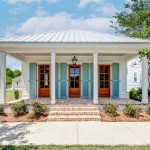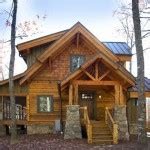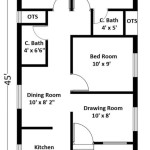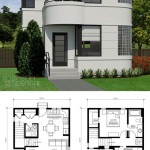River house plans are meticulously designed architectural blueprints that outline the construction and layout of houses specifically intended for riverside locations. These plans take into account the unique challenges and opportunities presented by building near a river, such as access to water, flood risks, and scenic views.
River houses are often sought after for their tranquil ambiance, recreational opportunities, and stunning vistas. They offer a unique living experience that combines the serenity of nature with the convenience of modern amenities. Whether you’re an avid angler, a nature enthusiast, or simply someone who appreciates the beauty of water, a river house can provide the perfect backdrop for your lifestyle.
In the subsequent sections, we will delve into the various aspects of river house plans, exploring their key features, design considerations, and construction techniques. We will also discuss the benefits and considerations involved in building a river house, providing valuable insights to help you make informed decisions.
River house plans encompass a range of important considerations to ensure the structural integrity, functionality, and aesthetic appeal of the home. Here are nine key points to keep in mind when designing and building a river house:
- Floodplain regulations
- Foundation design
- Water access
- Erosion control
- Scenic views
- Outdoor living spaces
- Sustainability
- Building materials
- Landscaping
By carefully addressing these factors, river house plans can create homes that are both safe and beautiful, offering a unique and fulfilling living experience.
Floodplain regulations
Floodplain regulations are a critical aspect of river house plans, as they determine the allowable construction methods and building requirements within designated floodplains. These regulations aim to minimize the risk of flood damage and ensure the safety of residents and property. Understanding and adhering to floodplain regulations is essential for building a compliant and insurable river house.
Floodplains are areas adjacent to rivers or other bodies of water that are susceptible to flooding during periods of heavy rainfall or snowmelt. Construction in floodplains is often restricted or requires special permits and design considerations. River house plans must comply with local floodplain ordinances, which typically specify:
- Building setbacks from the riverbank
- Minimum elevation requirements for the lowest floor
- Floodproofing measures, such as elevated foundations or flood vents
- Restrictions on the use of certain building materials
By adhering to floodplain regulations, river house plans can help ensure the safety and longevity of the home, while also minimizing the potential for flood damage and associated financial losses.
In addition to local floodplain ordinances, river house plans may also need to comply with state or federal regulations, such as the National Flood Insurance Program (NFIP). The NFIP provides flood insurance to property owners in designated floodplains, but requires that buildings meet certain construction standards to qualify for coverage. River house plans should be designed to meet or exceed these standards to ensure insurability and protect the financial investment in the home.
Foundation design
Foundation design is a critical aspect of river house plans, as it determines the stability, durability, and flood resistance of the home. The foundation must be carefully engineered to withstand the unique challenges of a riverside location, including potential flooding, erosion, and soil conditions.
- Elevated foundations
Elevated foundations are commonly used in river house plans to raise the living space above the potential flood level. This can be achieved using piers, columns, or a combination of both. Elevated foundations provide several benefits, including:
- Protection from flood damage
- Improved ventilation and airflow
- Increased natural light
- Enhanced views of the river
- Flood-resistant foundations
Flood-resistant foundations are designed to withstand the forces of floodwaters and minimize damage to the home. These foundations typically use waterproof materials, such as concrete or steel, and are often reinforced with additional structural elements. Flood-resistant foundations can help protect the home from flooding, even if the water level rises above the foundation.
- Soil conditions
The soil conditions at the building site can have a significant impact on the foundation design. Riverfront properties often have sandy or unstable soil conditions, which require special foundation techniques to ensure stability. Geotechnical engineers can be consulted to evaluate the soil conditions and recommend the most appropriate foundation design.
- Erosion control
Erosion control measures are essential to protect the foundation and surrounding property from erosion caused by river currents or flooding. These measures can include riprap (large rocks or stones placed along the riverbank), retaining walls, or vegetation plantings. Erosion control helps to maintain the integrity of the riverbank and prevents soil loss that could undermine the foundation.
By carefully considering the foundation design in river house plans, homeowners can ensure the structural integrity and longevity of their home, while also protecting it from the potential hazards of a riverside location.
Water access
Water access is a key consideration in river house plans, as it determines how the homeowners will interact with and enjoy the riverfront location. River house plans should carefully consider the following aspects of water access:
Type of water access
The type of water access available at the building site will influence the design of the river house. Some common types of water access include:- Direct river frontage: The property has direct access to the river, typically with a private dock or boat launch.
- Indirect river access: The property does not have direct river frontage, but has access to the river through a shared or public dock or boat launch.
- Limited water access: The property has limited or seasonal access to the river, such as during high water levels or through a small stream.
The type of water access will determine the types of water-related activities that are possible, such as swimming, boating, or fishing.
Location of water access
The location of the water access point on the property will also influence the design of the river house. The water access point should be conveniently located and easily accessible from the main living areas of the home.Waterfront features
The presence of natural or man-made waterfront features, such as a beach, dock, or boat ramp, can enhance the water access and recreational opportunities of a river house. River house plans should consider how these features can be incorporated into the design to maximize the enjoyment of the riverfront location.Water quality and safety
The quality and safety of the river water should also be considered in river house plans. The water quality can affect the types of water-related activities that are possible, and the safety of the water should be considered for swimming and other recreational activities.By carefully considering water access in river house plans, homeowners can design a home that fully takes advantage of the unique opportunities and benefits of a riverside location.
Erosion control
Erosion control is a critical aspect of river house plans, as it helps to protect the foundation and surrounding property from erosion caused by river currents or flooding. Erosion can occur naturally over time, or it can be accelerated by human activities, such as construction or land clearing. Erosion control measures can help to slow down or prevent erosion, and they can also help to restore damaged areas.
There are a variety of erosion control methods that can be used in river house plans, depending on the specific site conditions and the severity of the erosion problem. Some common erosion control measures include:
- Riprap: Riprap is a layer of large rocks or stones that is placed along the riverbank to protect it from erosion. Riprap can be used to create a revetment, which is a sloping wall of rocks that helps to deflect the force of the water, or it can be used to create a gabion, which is a cage filled with rocks that is placed along the riverbank.
- Retaining walls: Retaining walls are vertical walls that are built to hold back soil and prevent erosion. Retaining walls can be made from a variety of materials, such as concrete, stone, or wood. They are often used to protect riverbanks from erosion caused by flooding or high water levels.
- Vegetation plantings: Vegetation plantings can help to hold soil in place and prevent erosion. Plants with deep root systems are particularly effective at preventing erosion, as their roots help to bind the soil together. Vegetation plantings can also help to filter pollutants from runoff water and provide habitat for wildlife.
- Bioengineering techniques: Bioengineering techniques use living plants to help control erosion. These techniques can include planting trees and shrubs along the riverbank, or using live stakes or fascines (bundles of branches) to create a living revetment. Bioengineering techniques can be very effective at preventing erosion, and they can also help to improve the overall health of the river ecosystem.
By carefully considering erosion control in river house plans, homeowners can help to protect their property from damage and preserve the natural beauty of the riverfront environment.
In addition to the above measures, there are a number of other things that homeowners can do to help control erosion on their property, such as:
- Minimizing impervious surfaces: Impervious surfaces, such as concrete and asphalt, do not allow water to soak into the ground, which can lead to increased runoff and erosion. Homeowners can help to reduce erosion by minimizing the amount of impervious surfaces on their property.
- Directing runoff water away from erodible areas: Runoff water can be directed away from erodible areas by using gutters, downspouts, and berms. This will help to reduce the amount of water that is available to cause erosion.
- Maintaining vegetation: Vegetation helps to hold soil in place and prevent erosion. Homeowners should maintain vegetation on their property, and they should replant any areas that have been damaged by erosion.
- Avoiding disturbing natural drainage patterns: Natural drainage patterns should be avoided when possible. Disturbing natural drainage patterns can lead to increased runoff and erosion.
By taking these steps, homeowners can help to control erosion on their property and protect the natural beauty of the riverfront environment.
Scenic views
Scenic views are a major consideration in river house plans, as they can greatly enhance the enjoyment and value of the home. Riverfront properties offer unique opportunities to capture stunning views of the river, surrounding , and distant landscapes. River house plans should carefully consider how to maximize these views and create a harmonious relationship between the home and its environment.
Window placement
The placement of windows is critical in capturing scenic views. Large windows that face the river will provide the best views and allow natural light to flood into the home. Bay windows or picture windows can be used to create a panoramic view of the river and surrounding area. Skylights can also be used to bring natural light into the home and provide views of the sky and treetops.Outdoor living spaces
Outdoor living spaces, such as decks, patios, and porches, can be strategically placed to take advantage of scenic views. These spaces can be used for relaxing, entertaining, and enjoying the beauty of the outdoors. Covered outdoor living spaces can provide protection from the sun and rain, while still allowing homeowners to enjoy the views.Orientation of the home
The orientation of the home on the building site can also impact the scenic views. Homes that are oriented towards the river will have better views than homes that are oriented away from the river. The home should be positioned to capture the best views of the river and surrounding area, while also considering other factors such as sunlight, privacy, and access to the water.Landscaping
Landscaping can be used to frame and enhance scenic views. Trees and shrubs can be planted to create a natural buffer between the home and the river, while also providing privacy and shade. Flowering plants can be used to add color and interest to the landscape, and they can also attract birds and other wildlife.By carefully considering scenic views in river house plans, homeowners can create a home that is both beautiful and enjoyable. Scenic views can add value to the home, and they can also provide a sense of peace and tranquility.
Outdoor living spaces
Outdoor living spaces are an essential part of river house plans, as they allow homeowners to enjoy the beauty of the riverfront environment and extend their living space outdoors. River house plans should carefully consider the design and placement of outdoor living spaces to maximize their functionality and enjoyment.
- Decks
Decks are a popular type of outdoor living space for river houses. They can be built on multiple levels to create a tiered effect, and they can be covered or uncovered. Decks provide a great place to relax, entertain, and enjoy the views of the river. They can also be used for dining, sunbathing, or simply enjoying the fresh air.
- Patios
Patios are another popular type of outdoor living space for river houses. They are typically made of concrete or pavers, and they can be covered or uncovered. Patios are a great place to entertain guests or simply relax and enjoy the outdoors. They can also be used for dining, grilling, or playing games.
- Porches
Porches are a great way to add charm and character to a river house. They can be screened in to keep out insects, or they can be left open to enjoy the fresh air. Porches are a great place to relax, read a book, or simply enjoy the views of the river. They can also be used for dining or entertaining guests.
- Gazebos
Gazebos are a beautiful and functional addition to any river house. They provide a shaded area to relax and entertain guests, and they can also be used for dining or cooking. Gazebos can be freestanding or attached to the house, and they can be made from a variety of materials, such as wood, metal, or vinyl.
When designing outdoor living spaces for river houses, it is important to consider the following factors:
- Views: The outdoor living spaces should be positioned to take advantage of the best views of the river and surrounding area.
- Sun and shade: The outdoor living spaces should be designed to provide a balance of sun and shade. This can be achieved by using a combination of covered and uncovered areas, as well as by planting trees and shrubs to provide shade.
- Privacy: The outdoor living spaces should be designed to provide privacy from neighbors and passersby. This can be achieved by using fences, hedges, or other screening devices.
- Access: The outdoor living spaces should be easily accessible from the main living areas of the house. This can be achieved by using doors, windows, or stairs.
By carefully considering these factors, river house plans can create outdoor living spaces that are both beautiful and functional. These spaces will allow homeowners to enjoy the beauty of the riverfront environment and extend their living space outdoors.
Sustainability
Sustainability is a key consideration in river house plans, as it ensures that the home is built in a way that minimizes its environmental impact and maximizes its energy efficiency. Sustainable river house plans can help to protect the natural beauty of the riverfront environment, reduce the homeowner’s energy costs, and create a healthier and more comfortable living space.
There are a number of different ways to incorporate sustainability into river house plans. Some of the most common and effective strategies include:
- Energy-efficient appliances and systems: Energy-efficient appliances and systems can significantly reduce the energy consumption of a river house. This can include things like energy-efficient lighting, heating and cooling systems, and water heaters.
- Renewable energy sources: Renewable energy sources, such as solar and wind power, can be used to generate electricity and heat for a river house. This can help to reduce the home’s reliance on fossil fuels and lower its carbon footprint.
- Sustainable building materials: Sustainable building materials, such as recycled materials and sustainably harvested wood, can help to reduce the environmental impact of a river house. These materials can also help to improve the indoor air quality of the home.
- Water conservation: Water conservation measures, such as low-flow fixtures and rainwater harvesting systems, can help to reduce the water consumption of a river house. This can help to protect the local water supply and reduce the homeowner’s water bills.
By incorporating sustainability into river house plans, homeowners can create a home that is both beautiful and environmentally friendly. Sustainable river house plans can help to protect the natural beauty of the riverfront environment, reduce the homeowner’s energy costs, and create a healthier and more comfortable living space.
In addition to the above strategies, there are a number of other things that homeowners can do to make their river house more sustainable, such as:
- Planting native trees and shrubs: Native trees and shrubs help to filter pollutants from the air and water, and they can also provide food and shelter for wildlife. Planting native trees and shrubs around your river house can help to improve the local environment and reduce your impact on the ecosystem.
- Using natural landscaping techniques: Natural landscaping techniques, such as using native plants and avoiding the use of pesticides and fertilizers, can help to protect the natural beauty of the riverfront environment. Natural landscaping techniques can also help to reduce your water consumption and maintenance costs.
- Reducing your waste: Reducing your waste can help to reduce your environmental impact and save you money. There are a number of things you can do to reduce your waste, such as composting food scraps, recycling, and buying less stuff.
- Living a more sustainable lifestyle: Living a more sustainable lifestyle can help to reduce your environmental impact and improve your quality of life. There are a number of things you can do to live a more sustainable lifestyle, such as eating less meat, driving less, and using less energy.
By taking these steps, homeowners can help to create a more sustainable riverfront community. Sustainable river house plans and sustainable living practices can help to protect the natural beauty of the riverfront environment, reduce our impact on the ecosystem, and create a healthier and more sustainable future.
Building materials
The choice of building materials for river house plans is critical to ensuring the durability, sustainability, and aesthetic appeal of the home. River house plans should carefully consider the following factors when selecting building materials:
- Durability: River houses are exposed to a unique set of challenges, including flooding, erosion, and harsh weather conditions. Building materials should be chosen for their durability and ability to withstand these challenges. Durable materials will help to protect the home from damage and ensure its longevity.
- Sustainability: Sustainable building materials are those that have a low environmental impact and are produced in a sustainable manner. Sustainable building materials can help to reduce the carbon footprint of the home and protect the natural beauty of the riverfront environment. Sustainable building materials often include recycled materials, sustainably harvested wood, and low-VOC (volatile organic compound) materials.
- Aesthetics: The building materials should complement the architectural style of the home and the surrounding environment. Natural materials, such as wood and stone, can help to create a warm and inviting atmosphere. Modern materials, such as metal and glass, can create a more contemporary look. The choice of building materials should reflect the homeowner’s personal preferences and the desired aesthetic of the home.
- Cost: The cost of building materials is an important consideration for river house plans. The cost of materials will vary depending on the type of material, the availability of the material, and the location of the building site. Homeowners should carefully consider the cost of building materials when making their selections.
Some of the most common building materials used in river house plans include:
- Wood: Wood is a popular choice for river house plans because it is durable, sustainable, and aesthetically pleasing. Wood can be used for framing, siding, roofing, and interior finishes. Wood is a versatile material that can be used to create a variety of architectural styles.
- Stone: Stone is another popular choice for river house plans because it is durable, weather-resistant, and fire-resistant. Stone can be used for foundations, walls, fireplaces, and patios. Stone is a beautiful material that can add a touch of elegance to any home.
- Concrete: Concrete is a strong and durable material that is often used for foundations, walls, and floors. Concrete is a relatively inexpensive material that is easy to work with. Concrete can be used to create a variety of architectural styles.
- Metal: Metal is a strong and durable material that is often used for roofing, siding, and trim. Metal is a relatively lightweight material that is easy to install. Metal can be used to create a variety of architectural styles.
- Glass: Glass is a beautiful and versatile material that can be used for windows, doors, and skylights. Glass allows natural light to enter the home and can create a feeling of spaciousness. Glass is a relatively expensive material that can be fragile.
By carefully considering the factors discussed above, river house plans can select building materials that will ensure the durability, sustainability, aesthetic appeal, and cost-effectiveness of the home.
Landscaping
Landscaping is an essential part of river house plans, as it can help to protect the home from erosion, enhance the aesthetic appeal of the property, and create a more inviting and enjoyable outdoor space. River house plans should carefully consider the following factors when designing the landscape:
- Erosion control
Erosion control is a critical consideration for river house plans, as erosion can damage the home and surrounding property. Landscaping can help to control erosion by planting trees and shrubs with deep root systems, which help to hold the soil in place. Vegetation can also help to slow down the flow of water, which can reduce erosion. In addition, landscaping can be used to create terraces and other structures that help to stabilize the soil and prevent erosion.
- Privacy
Landscaping can be used to create privacy for river houses, which is important for both aesthetic and security reasons. Trees and shrubs can be planted to create a natural buffer between the home and the river, or to screen unsightly views. Fences and walls can also be used to create privacy, but they should be designed to complement the architectural style of the home and the surrounding landscape.
- Aesthetics
Landscaping can be used to enhance the aesthetic appeal of river houses. Trees and shrubs can be planted to create a beautiful and inviting outdoor space. Flowering plants can be used to add color and interest to the landscape, and they can also attract birds and other wildlife. Water features, such as ponds and fountains, can also be used to add beauty and tranquility to the landscape.
- Functionality
Landscaping can also be used to create functional outdoor spaces for river houses. Patios and decks can be built for entertaining guests or simply relaxing and enjoying the views. Fire pits and grills can be added to create a cozy and inviting outdoor space. In addition, landscaping can be used to create pathways and walkways that make it easy to get around the property.
By carefully considering these factors, river house plans can create a landscape that is both beautiful and functional. Landscaping can help to protect the home from erosion, enhance the aesthetic appeal of the property, and create a more inviting and enjoyable outdoor space.










Related Posts








